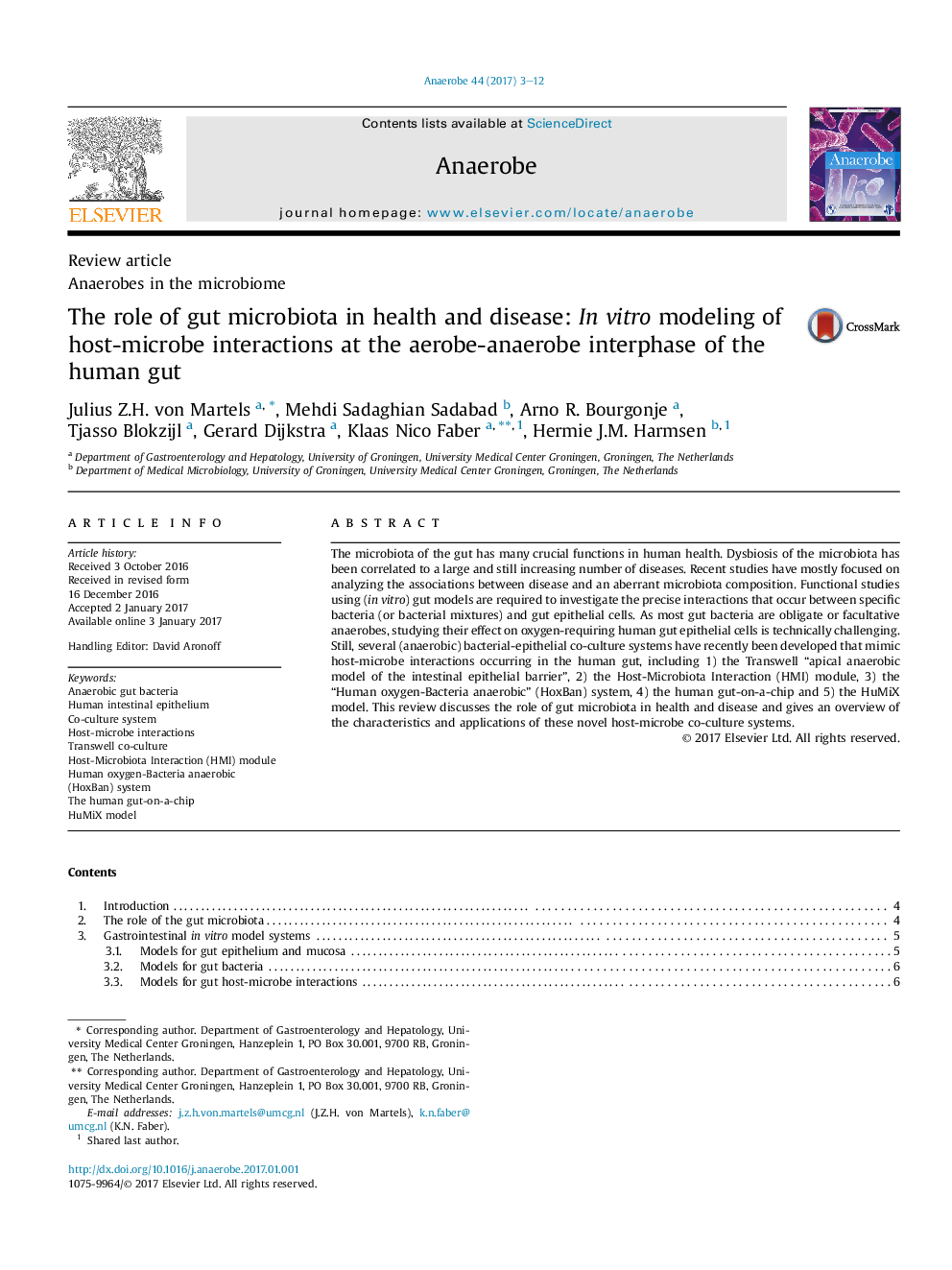| Article ID | Journal | Published Year | Pages | File Type |
|---|---|---|---|---|
| 5671219 | Anaerobe | 2017 | 10 Pages |
â¢Gut microbiota play an essential role in human health.â¢Anaerobic bacteria form the major part of the gut microbiota.â¢The oxygen-sensitivity of anaerobes hinders interaction studies with oxygen-requiring epithelial cells.â¢Host-anaerobe interaction models enable detailed study of this interplay.â¢The gut microbiome is an attractive target to modify to improve human health.
The microbiota of the gut has many crucial functions in human health. Dysbiosis of the microbiota has been correlated to a large and still increasing number of diseases. Recent studies have mostly focused on analyzing the associations between disease and an aberrant microbiota composition. Functional studies using (in vitro) gut models are required to investigate the precise interactions that occur between specific bacteria (or bacterial mixtures) and gut epithelial cells. As most gut bacteria are obligate or facultative anaerobes, studying their effect on oxygen-requiring human gut epithelial cells is technically challenging. Still, several (anaerobic) bacterial-epithelial co-culture systems have recently been developed that mimic host-microbe interactions occurring in the human gut, including 1) the Transwell “apical anaerobic model of the intestinal epithelial barrier”, 2) the Host-Microbiota Interaction (HMI) module, 3) the “Human oxygen-Bacteria anaerobic” (HoxBan) system, 4) the human gut-on-a-chip and 5) the HuMiX model. This review discusses the role of gut microbiota in health and disease and gives an overview of the characteristics and applications of these novel host-microbe co-culture systems.
